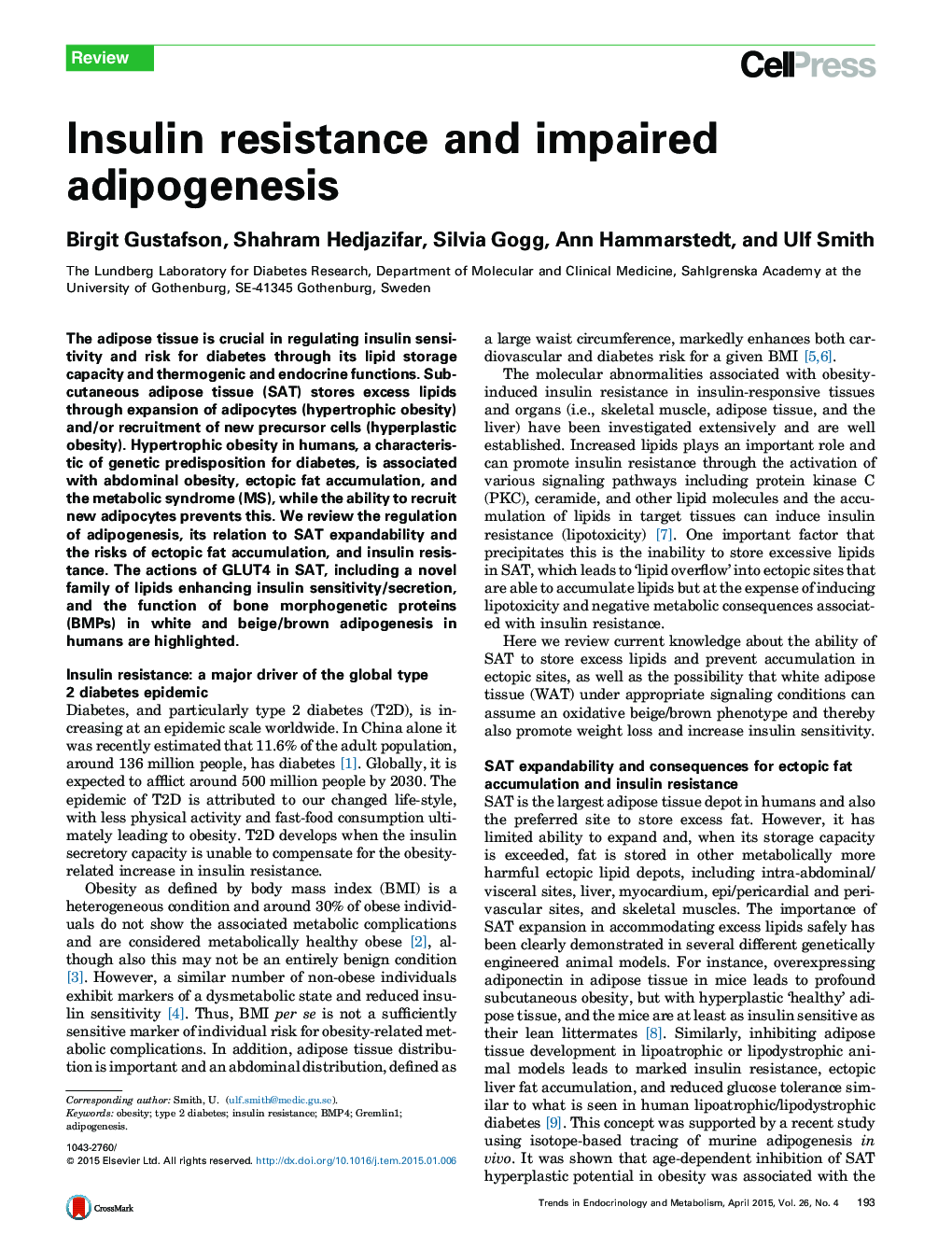| Article ID | Journal | Published Year | Pages | File Type |
|---|---|---|---|---|
| 2810187 | Trends in Endocrinology & Metabolism | 2015 | 8 Pages |
•Subcutaneous adipose tissue has a finite expansion capacity.•Adipose cell expansion (hypertrophic obesity) is associated with abdominal obesity and insulin resistance.•The ability to increase subcutaneous adipogenesis is protective.•BMP4 regulates both white and beige/brown subcutaneous adipogenesis.
The adipose tissue is crucial in regulating insulin sensitivity and risk for diabetes through its lipid storage capacity and thermogenic and endocrine functions. Subcutaneous adipose tissue (SAT) stores excess lipids through expansion of adipocytes (hypertrophic obesity) and/or recruitment of new precursor cells (hyperplastic obesity). Hypertrophic obesity in humans, a characteristic of genetic predisposition for diabetes, is associated with abdominal obesity, ectopic fat accumulation, and the metabolic syndrome (MS), while the ability to recruit new adipocytes prevents this. We review the regulation of adipogenesis, its relation to SAT expandability and the risks of ectopic fat accumulation, and insulin resistance. The actions of GLUT4 in SAT, including a novel family of lipids enhancing insulin sensitivity/secretion, and the function of bone morphogenetic proteins (BMPs) in white and beige/brown adipogenesis in humans are highlighted.
